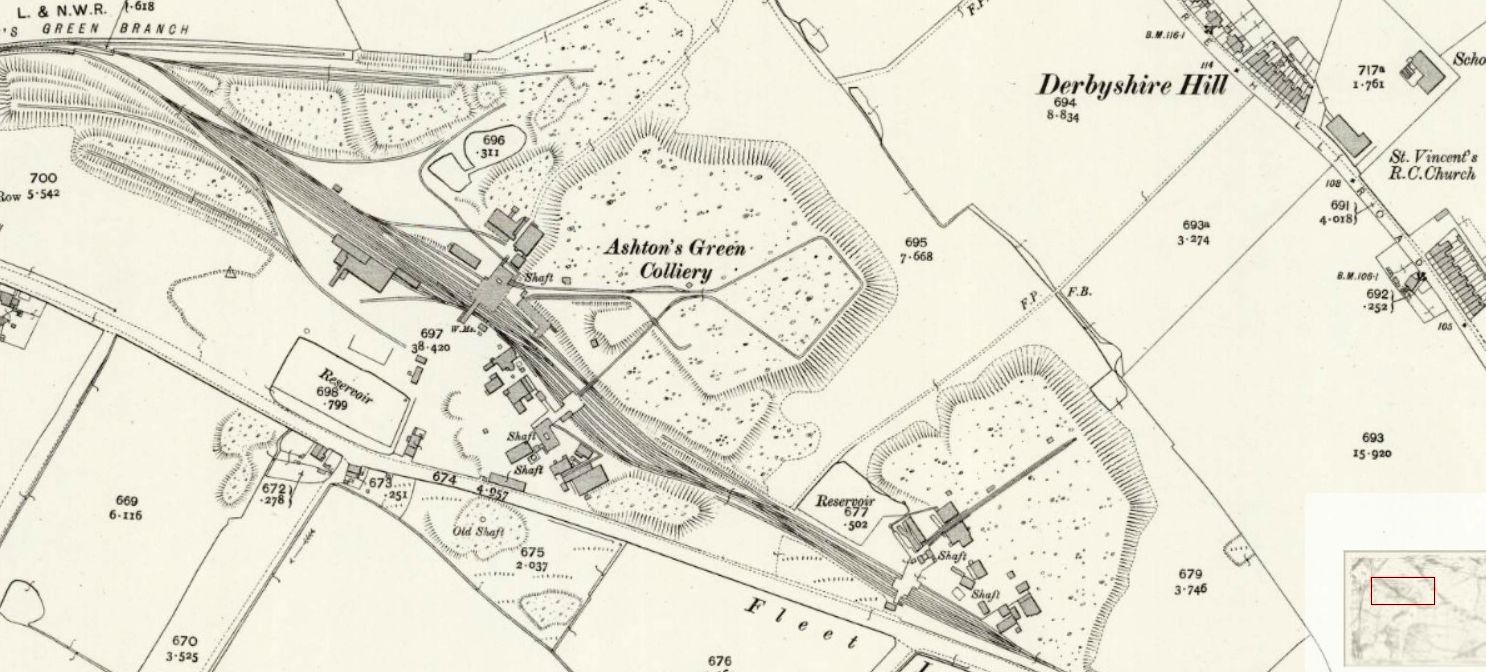Ashtons Green Colliery was situated between Fleet Lane and Derbyshire Hill Road, located at SJ 537948. There are the remains on the tramway that was opened in 1828 to the Sankey canal at Haydock Wood at SJ 944958.
This Colliery was in evidence in the 1780s when it was purchased for £5,500 by a Mr. Blackburn of Liverpool. At the beginning of the nineteenth century, James Orrell and Thomas Claughton worked the colliery very successfully. From then on it was run by John Shaw Leigh and his family, raising 20,000 tons of coal annually. The Colliery was taken over by Bromilow Foster & Co. in the 1880s and worked by them until its closure in 1931 when it was employing 1,126 men.
From a Town in the Industrial Revolution 1805 coal selling at 8/4d per ton.
Opening of the Runcorn gap Railway led to a reduction of canal tariffs in the 1830s.
Timeline
1780 Purchased for £5,500 by a Mr. Blackburn of Liverpool
1829 John Shaw Leigh was using the lines to transport coal.
1845 the colliery was still in the hands if the Leigh family.
1850 ASHTONS GREEN. Parr. Ashton Green Colliery Co.
1855 owned by John Shaw Leigh.
1863 Bromilow and Foster took over the pit.
1879 Owned by Bramall. Hy., and Co. Thomas Green was the certificated manager.
1882 Thomas Pennington the manager.
1888 Special rules of the Colliery Signed 31 Aug. 1888.
1894 Nos. 2, 3 and 5 pits Pennington manager Cert. No 1949.
1931 Closed.
No.2 – 64 underground 20 surface.
No.3 – 247 underground 65 surface.
No.5 – 329 underground 55 surface.
At Ashton Green circa 1845 women were employed as drawers.
“My grandmother’s grandmother used to work down the mine and she was drawing the boxes with a belt around her. Where they had a pony, they had a woman, belt and chain around them drawing the boxes and she’d fourteen children”.
- Who told you this? My mother, she lived at Peasley Cross and it was Ashtons Green Colliery.
- How did she go on if she was having children? Well, they used to walk down don’t they at Ashtons Green? Not go down in the cage, walk down, and they used to take the baby to the pithead at snap time while she fed it.
- So she came out of the pit to feed the children? Yes.
- What happened to the child whilst she was working? Oh, well, the others had it. Seven girls, yes. The other children used to look after it. She died at 61.
Later in the conversation, he was reminded by his wife about the belt and chain.
- “Your mother used to say they used to run up their shirts and put them in their knickers and that made space for the chain.”
List of accidents at this colliery.
Information supplied by Ian Winstanley and the Coal Mining History Resource Centre.

OS Map, Lancashire CVIII.2 1906
Reproduced by permission of the National Library of Scotland

